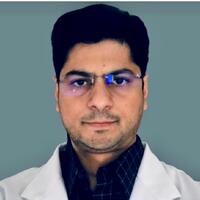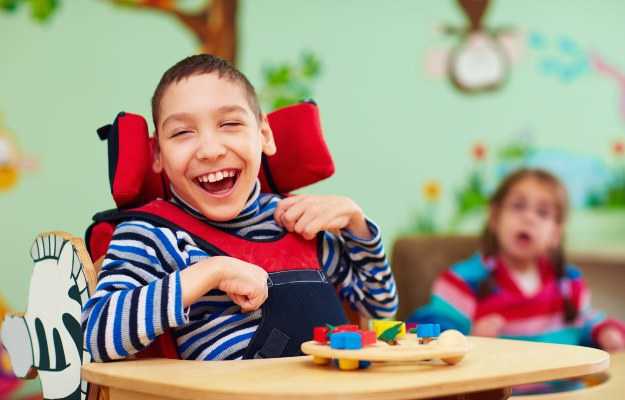Three out of every 1,000 children born in India have cerebral palsy. Over 70% of these children have a type of cerebral palsy known as spastic cerebral palsy. On World Cerebral Palsy Day 2020 (6 October), we bring to you a primer on what is spastic cerebral palsy, including information on spastic diplegia, spastic quadriplegia and spastic hemiparesis.
Also discussed here is the term "spasticity". According to medical literature, "Spasticity, a classical clinical manifestation of an upper motor neuron lesion... Clinically spasticity manifests as an increased resistance offered by muscles to passive stretching (lengthening) and is often associated with...clasp-knife phenomenon, increased tendon reflexes, clonus, and flexor and extensor spasms."
In other words, spasticity is characterised by a combination of high muscle tone (hypertonia), increased resistance in muscles that can't stretch enough to allow fluid movement, constant muscle contraction, muscle spasms and exaggerated reflexes (hyperactive tendon reflexes) that can result in imprecise, sometimes involuntary, movements.
Read on to know more about spastic cerebral palsy and spasticity:
- What is spastic cerebral palsy?
- What is spastic diplegia?
- What is spastic quadriplegia?
- What is spastic hemiplegia?
- Spastic meaning
What is spastic cerebral palsy?
Cerebral palsy is a common cause of lifelong motor disability among children. It can occur due to abnormal brain development or brain damage during important stages of development in the womb or in infancy (up to two years of age).
Depending on which part of the brain is affected, cerebral palsy can be of four types: spastic, dyskinetic, ataxic and mixed. Spastic cerebral palsy affects the motor cortex, the portion of the cerebral cortex responsible for voluntary movement.
People with spastic cerebral palsy have very high muscle tone (hypertonia) which can make their muscle too stiff or tight for normal movement and exaggerated reflexes (hyperactive tendon reflex).
Spastic cerebral palsy is the most common type of cerebral palsy in India and the world, accounting for roughly eight out of 10 cases of cerebral palsy worldwide.
Most of us know that cerebral palsy can happen if the child doesn’t get adequate oxygen during birth, but it can also happen due to genetic issues, infections during pregnancy, foetal stroke (if the baby’s brain doesn’t get enough oxygen in the womb), infections that cause brain inflammation in childhood and accidents in which there is a brain injury.
Additionally, some of the risk factors for cerebral palsy are premature birth, twin or multiple pregnancies, breech birth, low APGAR score, if the mom-to-be and baby’s blood types are incompatible (Rh incompatibility) and having a parent, sibling or first-cousin with cerebral palsy.
Spastic cerebral palsy can happen for all the same reasons.
The following symptoms are associated with spastic cerebral palsy:
- Delayed motor development
- Constant feeling of tightness (contraction) in the muscles, even at rest
- Muscle spasms
- Imprecise or "clumsy" movements
- Involuntary or uncontrolled movements
- In patients who can walk, the knees may hit or cross each other like the arms of a pair of scissors. The feet may also be turned (flexed)
- Inability to stretch the affected muscles fully
- Flexion (a bent) at the elbow(s), wrist(s), or finger(s) of the affected limbs
- Patients may have poor balance and loss of control over some movements
- In severe cases, patients may find it difficult to talk, eat and swallow
What is spastic diplegia?
Spastic cerebral palsy can affect different people differently. When it affects the muscles of the lower body, like both legs, hips and the pelvic region, it is known as spastic diplegia.
People with this condition experience a constant tightness in the affected muscles and their tendon reflexes tend to be hyperactive (tendons are connective tissues between bones and muscles; tendon reflexes are stretch reflexes, usually in response to a stimulus like a reflex hammer to check for knee-jerk reactions at the doctor’s office).
An important symptom of this type of cerebral palsy is the “scissor gait”; when stiffness (hypertonia) in the patients’ legs and/or hips cause the joints to flex abnormally and possibly hit or cross each other while walking. This movement can also be noticed in infants, who may make a scissor-like motion with their legs in the air.
What is spastic quadriplegia?
This type of spastic cerebral palsy affects all four limbs, with stiffness and hyperactive reflexes in the arms and legs. The condition may affect the torso and face as well. In some patients, it may make it difficult to talk and/or swallow. This type of cerebral palsy often occurs along with intellectual disability. Many children with spastic quadriplegic cerebral palsy also have epilepsy.
What is spastic hemiplegia?
Spastic cerebral palsy on one side of the body, resulting in spasticity in the arm and leg of the affected side, is known as spastic hemiplegia. People with this condition tend to favour one arm over the other—often, they will keep the fist of the non-dominant hand closed. People with this condition might have difficulty balancing and may also have a limp.
Spastic meaning
Spastic is a medical term for someone with spasticity. Spasticity, in turn, should only be used to describe a health condition in which the muscles are constantly stiff and contracted (tight) and resist being loosened or stretched to allow seamless movement.
Depending on the degree of spasticity, the patient’s movements can be imprecise or jerky because of the constant contraction (“pulling” or tight sensation) in the muscles and exaggerated tendon reflexes. In severe cases, the patient may have difficulty in talking, eating and swallowing.
According to the American Association of Neurological Surgeons, some of the symptoms of spasticity are:
- High muscle tone (hypertonia) and constant muscle stiffness
- Muscle spasms
- Muscle pain due to the constant stiffness and the involuntary contractions
- Scissor movement or unintended crossing of the legs
- Joint problems (though cerebral palsy is not a progressive disease—meaning it doesn’t necessarily become worse with time—some people may experience problems as the muscles pull and cause “bone and joint changes”, including scoliosis)
- Muscle fatigue
In addition to cerebral palsy, some conditions that may cause spasticity are:
- Traumatic brain injury
- Stroke
- Multiple sclerosis (a progressive autoimmune disease in which the sheath covering the nerves starts to deteriorate)
- Spinal cord injury
Doctors for World Cerebral Palsy Day 2020: what is spastic cerebral palsy?

Dr. Hemant Kumar
Neurology
11 Years of Experience

Dr. Vinayak Jatale
Neurology
3 Years of Experience

Dr. Sameer Arora
Neurology
10 Years of Experience

Dr. Khursheed Kazmi
Neurology
10 Years of Experience
References
- Mukherjee A. and Chakravarty A. [link[. Frontiers in Neurology, 17 December 2010; 1 :149. PMID: 21206767.
- Morrell D.S., Pearson J.M., Sauser D.D. Progressive bone and joint abnormalities of the spine and lower extremities in cerebral palsy. RadioGraphics, 2002; 22: 257–268.
- American Association of Neurological Surgeons, US [Internet]. Spasticity.
- Genetic and Rare Diseases Information Centre, National Center for Advancing Translational Sciences [Internet]. Spastic diplegia cerebral palsy.
- Cerebral Palsy Group, Windermere, Florida, US [Internet]. What is cerebral palsy?.
- Cerebral Palsy Guidance, New York, US [Internet]. Spastic hemiplegia cerebral palsy.









